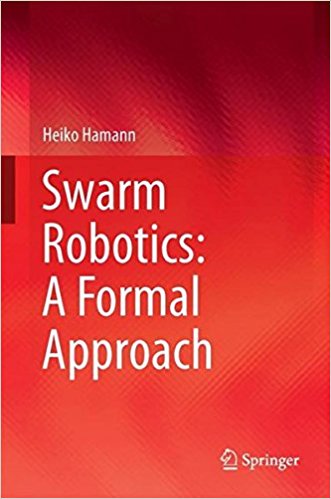
|
[B5]
Heiko Hamann Swarm Robotics: A Formal Approach ISBN 978-3319745268, Springer, March 2018 (in preparation) |
 |
|
|
Given the increasing number of sophisticated robots sharing our lives, the study of how large number of robots, so-called robot swarms, interact among themselves and with fellow humans to organize their activities and perform ever more complex tasks is becoming of paramount importance. With this book on swarm robotics, Heiko Hamann gives an important contribution to the foundations of this exciting research field. Prof. Marco Dorigo, Ph.D. Université libre de Bruxelles |
But it was one thing to release a population of virtual agents inside a computer's memory to solve a problem. It was another thing to set real agents free in the real world. -- Michael Crichton, Prey |